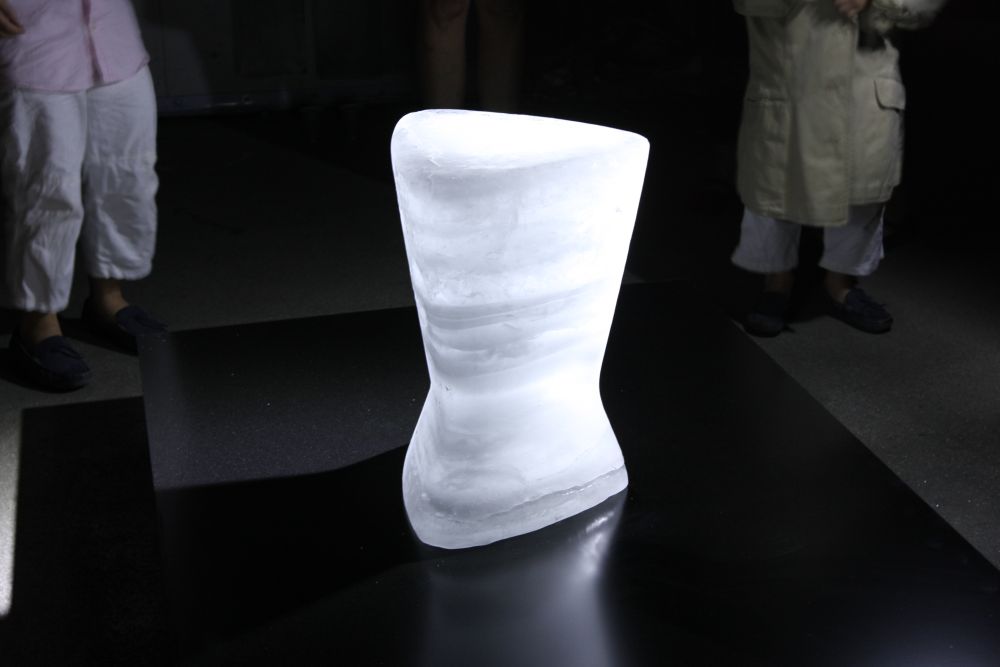There is nothing a newspaper sub-editor loves more than photos of an ice sculpting contest: blue sky, shimmering ice, chainsaws.
And indeed nothing the manager of a 5 star hotel restaurant loves more than a well sculpted block of ice to crown an obviously over-priced buffet.
However, ice isn't just chipped for the sculptural; it is popular as decorative bar furniture in winter climes and could arguably also be used for public furniture in those parts of the world where the winter temperatures remain well below zero for weeks on end.
Chipping away at ice blocks to form objects, however, isn't a particularly efficient use of a raw materials. Especially when your raw material is an important resource like water.
And so just as the first furniture pieces were made from hacking away at tree trunks, before we learned how to work more efficiently with wood; Austrian design studio Copa decided to look at more efficient ways of forming objects from ice.
And at Vienna Design Week they presented the first stage of their research; the stool Ljod.
Think of it as an ice cube you can sit on.
Albeit an ice cube created in a mould that contains a lot more innovation, technology and research than your average cheap plastic flamingo shaper.

Of course one could, and indeed should, question the ecological and social aspects of creating temporary furniture from water.
And we do.
However, if we understand everything correctly, the project at the moment is less about the stool Ljod per se, and more about researching the possibilities of moulding ice.
Which means the end of the project may not necessarily be colourful, funky stools for trendy lounge bars. But something much more interesting and sustainable. We can certainly think of a few interesting uses for such a process.
Far beyond a wriggling fish atop an Asian buffet.
And so we're not ignoring the ecological aspects; we're just keeping our powder dry until Copa launch a stool under the burning Milan sun at a party sponsored by a global spirit company.
We are however confident that Alfred Burzler and Thomas Exner's intentions are honourable.
Equaly as interesting as the process, was the location of the exhibition.
Inside the cold storage room of a frozen goods haulier on an industrial estate in west Vienna.
In the dark.
At minus 25 degrees.
Genius.
We went in shorts. We think Core 77 noticed.
We do know better. But we could genuinely tell you some eye-watering stories about times we've had in cold storage rooms. One day we inevitably will.
More information on Copa and Ljod can be found at www.copa.at